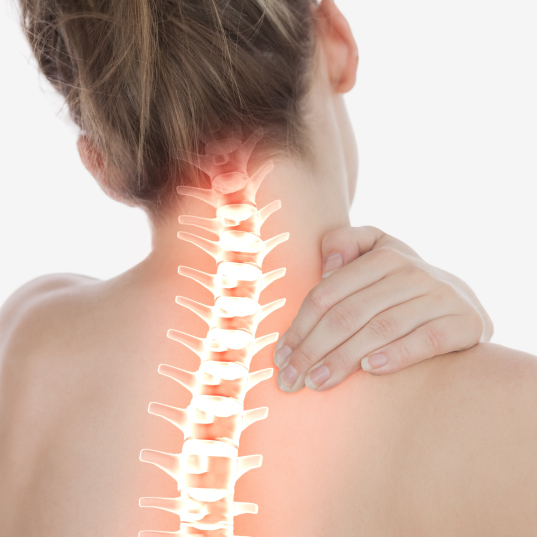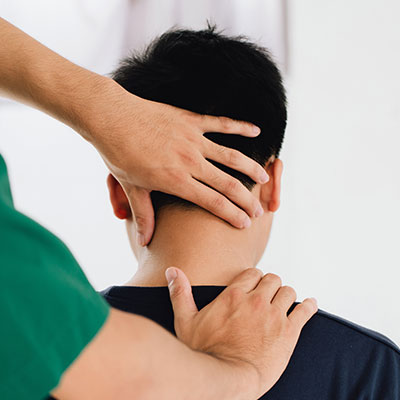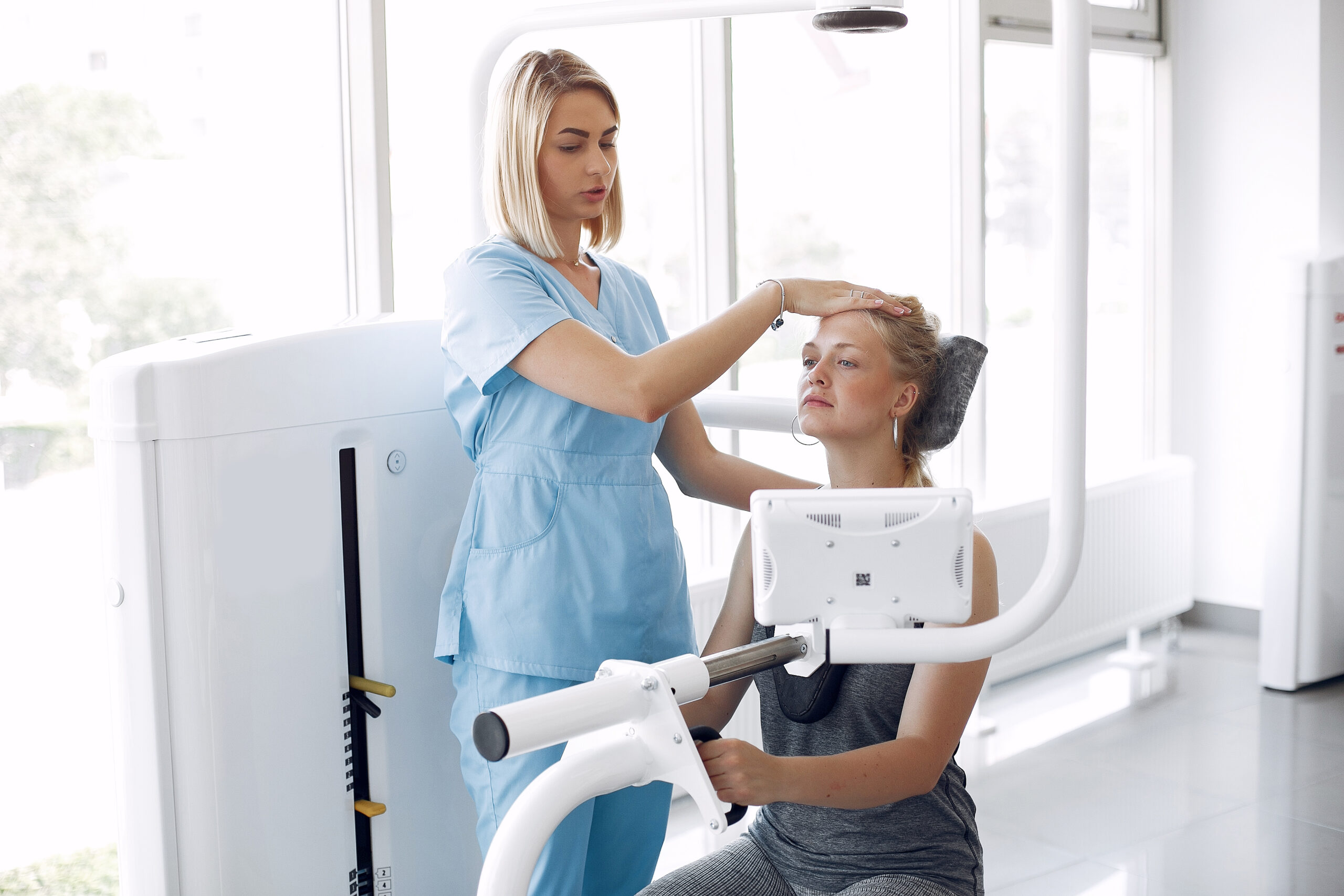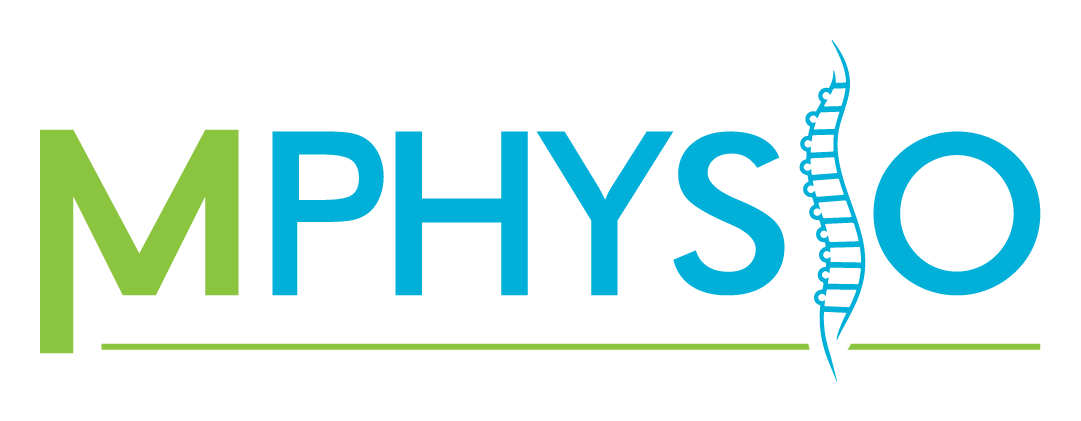
Radiculopathy
Cervical Nerve Root Compression, or Cervical Radiculopathy, is when the root of a nerve exiting the cervical spine is compressed or impacted. This causes neck and shoulder pain and/or associated symptoms to be felt either in the arm or at the neck.
As the nerve has become impacted, it is possible for facet joint pain, nerve pain, weakness in the neck muscles, numbness or abnormal spinal reflexes to be felt. There are many different causes of Cervical Nerve Root Compression, including disc bulges, osteophytes and disc degeneration.
Thoracic Outlet Syndrome
The Thoracic Outlet is the main passage that your neural, arterial and venous structures take as they leave/enter the trunk/ arm. Its borders are made up of the clavicle and its articulation with the acromio-clavicular joint, the upper ribcage and the surrounding musculature.
Through structural injury or change, as well as through biomechanical change, the Thoracic Outlet can compress or irritate these neural structures or blood vessels, causing Thoracic Outlet Syndrome.


Acute Wry Neck
Wry Neck is a condition that causes the joints in your neck to become stiff and sore, resulting in muscle spasm.
It is often a very sudden onset, and people will describe waking with chronic neck pain with no early signals or warning.
How Muscle Imbalances Affect Your Neck
Many cases of neck pain aren’t caused by injury, but by ongoing muscle imbalances that develop from posture, stress or repetitive movements. When certain neck muscles or upper back muscles become tight, weak or overactive, it can lead to neck strain, stiffness and reduced neck movement — even without a clear incident or trauma.

The Role of Neck and Upper Back Muscles
Your neck relies on a balance of strength and mobility across both deep stabilising muscles and larger movement muscles. When one group becomes dominant, it can pull the neck out of alignment, leading to:
- Muscle strains in the neck and shoulders
- A reduced range of motion, especially when turning or tilting the head
- Pain or tightness from overworked soft tissues
- Fatigue from holding the head facing forward for long periods (e.g. computer or phone use)
Your physiotherapist will assess these imbalances during your initial consultation, helping identify whether posture, weakness or muscle tension are contributing to your symptoms.
Restoring Balance Through Treatment
We don’t just treat the pain — we correct the cause. Your treatment plan will often involve a combination of:
- Manual therapy techniques to reduce tension and improve muscle mobility
- Prescribed neck exercises and mobility exercises to restore normal movement patterns
- Postural re-education and ergonomic advice
- Functional retraining to support everyday activities
Your physio will also guide you through basic corrective actions like chin tucks or shoulder retraction cues, encouraging you to gently press into better alignment under supervision. As symptoms improve, your program may progress to include resistance exercises that strengthen weak areas and prevent future recurrence.

Common Treatments: Physio for Neck Pain
We create plans for neck pain treatment, Brisbane, Gold Coast and Sydney at M Physio. Our treatment approach is evidence-based, hands-on and adjusted specifically to your individual needs. Whether your symptoms are caused by poor posture, injury or neck strain, our physiotherapists apply a combination of techniques to reduce pain, restore movement and improve function.
Manual Therapy Techniques
We use a variety of manual therapy techniques to target stiff joints and irritated soft tissues. This may include joint and muscle mobilisation, myofascial release, and trigger point therapy. These treatments are designed to relieve tension in the neck muscles and upper back muscles, reduce muscle guarding and improve local circulation.
Joint Mobilisations
Joint mobilisations are gentle, controlled movements applied to the cervical spine to restore proper neck movement and improve your range of motion. These are especially useful if you’re experiencing stiffness, mechanical neck pain or symptoms from conditions like Acute Wry Neck or Radiculopathy.
Postural Correction & Muscle Re-education
Many patients are unaware that daily habits — like sitting with the head facing forward — can significantly contribute to neck pain. Your physiotherapist will assess your posture and muscle imbalances, then guide you through movement retraining strategies. These include cues to help you gently press into corrected positions and improve neck alignment.
Exercise-Based Therapy
Following assessment, your physiotherapist will prescribe a targeted exercise program that includes resistance exercises, mobility exercises, and functional drills such as shoulder shrugs. These exercises aim to restore strength, flexibility and control across the neck range, while preventing future muscle strains.
Patient Education Self-Management Strategies
We place a strong emphasis on patient education so you understand the cause of your symptoms, your treatment options, and how to manage your condition between appointments. While we never recommend self-treatment, we do equip you with simple, physiotherapist-approved techniques and home exercises to support your recovery and maximise results.
When to Seek Help
If you’re experiencing neck pain — whether it’s persistent, related to an injury, or presents as sudden, severe pain — it’s important to seek professional assessment. Treating the underlying cause early with guided physiotherapy provides faster, safer healing and longer-lasting pain relief.
Exercise Program to Support Recovery
At M Physio, we believe in a structured, clinically-guided approach to recovery. If you’re experiencing neck pain, it’s important to understand that while exercises can support your progress, they should only be undertaken as part of a physiotherapist-designed program. Self-treatment without professional guidance can often lead to increased discomfort, ineffective results or worsening of symptoms.

Individualised Exercise Plans
Following your initial consultation and assessment, your physiotherapist will design a personalised exercise program. This program may include a combination of:
- Neck exercises to gradually restore muscle control and reduce stiffness
- Mobility exercises that gently encourage safe neck movement and help restore your range of motion
- Resistance exercises to rebuild strength in the neck muscles and upper back muscles, particularly where muscle strains or weakness are contributing to your pain
- Simple posture-supporting movements, such as shoulder shrugs and chin tucks, helping to keep your head facing forward during everyday tasks
All exercises are designed to target the affected soft tissues and joints, while improving stability, flexibility and postural endurance. Your physio will teach you how to gently press into or move through exercises to avoid aggravating any underlying conditions.
Guided Progression Between Sessions
Every movement or exercise will be carefully introduced and monitored during your in-clinic appointments. You will then be given clear, simple instructions to follow at home between sessions. This combination of hands-on physiotherapy and ongoing patient education helps ensure long-term improvements in function, pain management and recovery.
If you’re dealing with neck strain, severe pain or simply unsure about what’s causing your discomfort, avoid self-management. Book a session with our experienced physiotherapists so we can identify the cause and apply appropriate manual therapy techniques, joint mobilisations and corrective exercises to get you moving again — safely and effectively.

Physio For Neck Pain - FAQ
Will my neck pain go away?
In a large majority of cases, yes. Treating neck pain with physiotherapy has a very high success rate. Your physiotherapist will need to assess your neck, head and spine to identify if there may be any medical or structural damage that needs to be seen to in order to relieve neck pain and/or other symptoms. This is very rare, and only seen in a small percentage of patients. For most cases, your physiotherapist will be identifying the very treatable dysfunctions and factors that are contributing to your neck pain. Once assessed, improvement is generally rapid and we normally see a full resolution within 12 weeks.
Can I reduce pain myself through neck strengthening exercises?
While there are certain exercises for neck pain that you can carry out yourself, we highly advise you speak to a physiotherapist first in order to efficiently minimise or treat neck pain. This will allow you to receive the right education on the underlying cause of your condition. As well as a specific plan for neck pain treatment. Brisbane patients have told us that they found that their neck pain persists or is sometimes worsened by the attempt of self treatment.
Does my neck pain need a scan?
Not in most cases. If your physiotherapist feels that there may be a medical reason for your neck pain, or there is a structural impairment that needs to be further investigated, then a medical image scan may be required. Your physiotherapist will advise if this may be the case, and will help to liaise with your GP if a referral or medical investigation is required. If you already had a scan, that’s fine, bring it in with you to your physiotherapy session and your physio can go through the results with you.
Can my neck pain cause headaches?
The short answer is yes. It is fairly common for structures in the neck to be able to cause a headache or even symptoms of migraine. The most common cause of this is Cervicogenic Headache. This is when structures between C1-3 (the top 3 joints in your neck) become irritated, and they then refer pain into the head via their attachment to the brainstem. Less frequently, muscle knots around your neck and shoulders can refer pain into the neck or head. Both of these types of pain referral are very treatable. Talk to your physiotherapist about organising an assessment.

